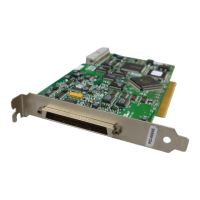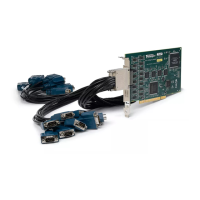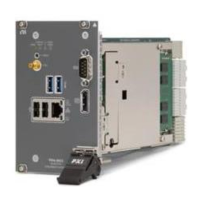Chapter 4 Programming
PCI E Series RLPM 4-52
©
National Instruments Corporation
G0_Command_Register
G0_Bank_Switch_Start<=1
if (g_bank_to_be_used == 0)
g_bank_to_be_used =1;
else
g_bank_to_be_used =0;
}
else{
inform the user the wave rate cannot be changed
}
RTSI Trigger Lines Programming Considerations
For detailed descriptions of RTSI and RTSI programming, see Chapter 6,
RTSI Trigger, of the DAQ-STC Technical Reference Manual. Also, see the
same section of the DAQ-STC manual for a description of the signal lines
referred to in this chapter.
There are seven 12 to 1 muxes that drive the seven RTSI lines. Any of the
RTSI lines can be driven with any of eight internally generated timing
signals or with any of the four RTSI board signals. Similarly, there are four
8 to 1 muxes that can drive the four RTSI board signals with any of the
seven RTSI trigger signals and the AISTART or AISTOP signal.
See the DAQ-STC manual for information on programming the RTSI
interface. The function
MSC_RTSI_Pin_Configure is very
straightforward and easy to use.
Notice that of the four RTSI board signals, only RTSI_BRD0 is connected
to GENTRIG0. The remaining three are unused. The GENTRIG0 signal is
a logical AND of the CONVERT pulse and the DOTRIG0 bit in the
configuration memory. When the DOTRIG0 is set, the GENTRIG line is
driven by the CONVERT signal. This can be driven out to the RTSI lines
and used by some other board for synchronization purposes.
Analog Triggering
All of the PCI E Series boards except the PCI-MIO-16XE-50, PCI-6023E,
PCI-6024E, and PCI-6025E contain true analog triggering hardware,
which provides fast slope and level detection, as well as window detection.
The mode selection circuitry is in the DAQ-STC, while the analog
comparison is performed by onboard circuitry.

